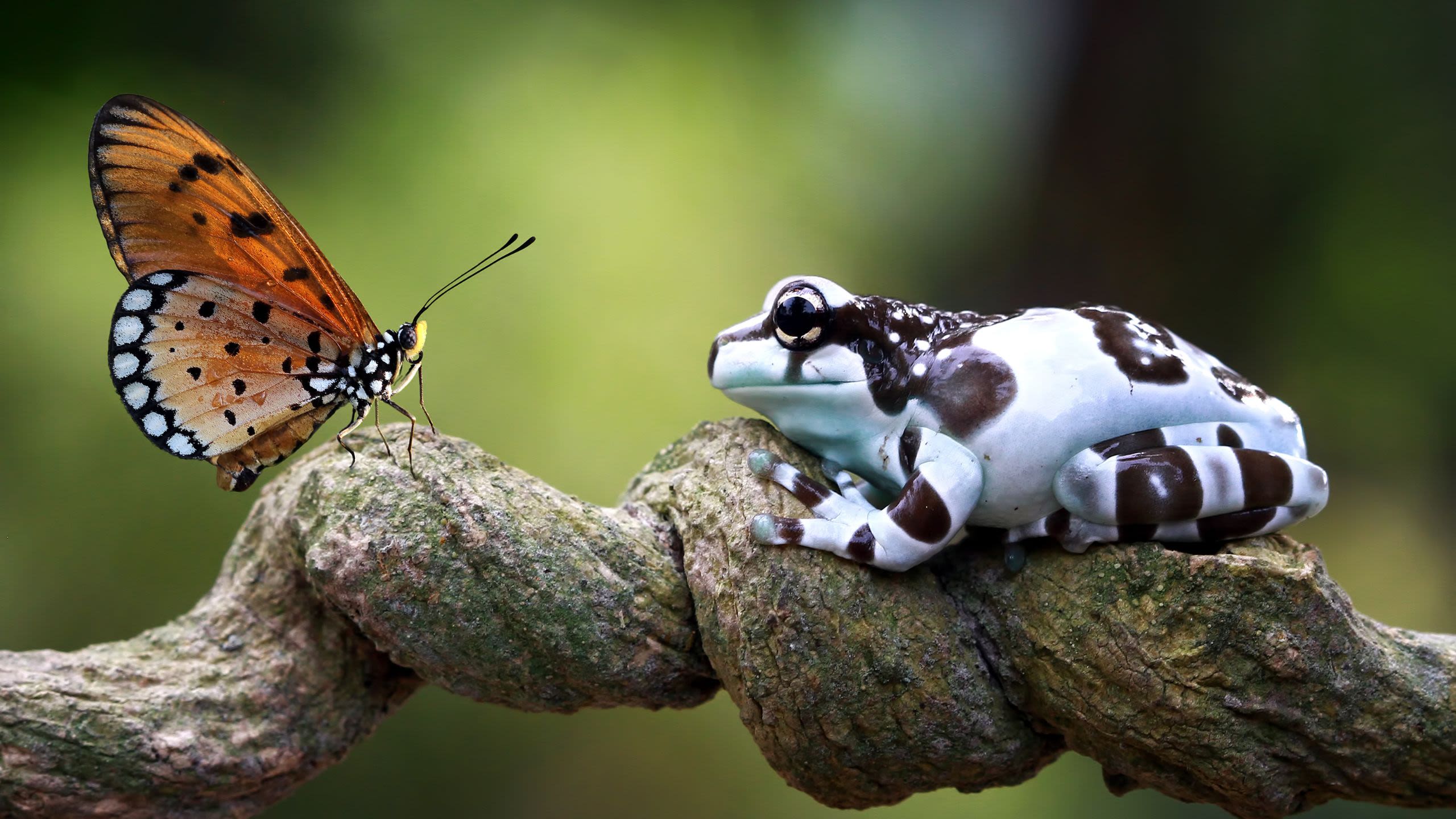What do you know about the health of our planet?
Take our quiz to test your knowledge!












Since the first Earth Day in 1970, the United States has worked to reduce pollution and address the climate crisis, joining many other concerned nations. “The climate crisis is fundamentally a global, not a bilateral, issue,” says Special Presidential Envoy for Climate John Kerry.
Test your knowledge about progress to prevent pollution, save endangered species and everything in between.
Scroll Down
╲╱
Question #1 of 7
How much do all countries need to cut greenhouse gas emissions — the primary driver of climate change — by 2030 in order to reach net-zero emissions by 2050?
According to the United Nations, burning fossil fuels account for over 75% of greenhouse gas emissions. When greenhouse gases accumulate in the atmosphere, they trap heat and cause temperatures to rise. Those greenhouse gases are the primary driver of global warming and are why our Earth is currently 1.1 degrees Celsius warmer than pre-industrial levels.
To have the best chance of preventing the worst-case scenarios — such as extreme weather patterns, rising sea levels or loss of biodiversity — nations must cut greenhouse gas emissions by 43%. Cutting by that much brings into reach the Paris Agreement goal of limiting global warming to 1.5 degrees Celsius.
In the United States, the Inflation Reduction Act of 2022 promises to put America on track to curb emissions by 40% by 2030, helping meet Paris Agreement pledges.

Question #2 of 7
Each year, how many metric tons of carbon dioxide do forests absorb?
The Earth’s natural resources are one of the best defenses for absorbing greenhouse gas emissions. Forests around the world — such as Tongass National Forest in the United States, the Congo rainforest in Africa and South America’s Amazon rainforest — absorb approximately 7.6 billion metric tonnes of carbon dioxide per year.
However, if forests are cut down, the stored carbon dioxide is released back into the atmosphere, bringing more warming.
It’s why the U.S. government works to protect more national forests than ever before. In January, President Biden finalized the Tongass National Forest protections he promised in August 2021, and in February, the Biden administration designated millions in funding to support native seed partnerships and forestry initiatives.

Question #3 of 7
How many animal species are on the U.S. endangered species list?
And that’s just the endangered species in the United States. The UN reports over 1 million species worldwide are threatened with extinction because of degraded ecosystems.
Since former President Richard Nixon signed the Endangered Species Act in 1973, the U.S. has brought some species back from the brink of extinction — saving the grizzly bear, the whooping crane and the black-footed ferret, among others.

Question #4 of 7
Some modern medicines and cancer treatment drugs are derived from tropical plants and bio-inspired products.
The United Nations says 25% of modern medicines come from tropical plants and 70% of all cancer drugs are either natural or bio-inspired, thanks to the rich biodiversity of tropical rainforests and forests.
Unfortunately, both the climate crisis and human-caused industrialization threaten natural biodiversity in the animal and plant kingdoms. It’s why at COP15 in Montreal last year, nations from around the world came together and pledged to conserve 30% of biodiverse land and water by 2030. To meet this goal, they plan to increase funding to $20 billion each year to protect these areas.

Question #5 of 7
About what percentage of carbon dioxide emissions does the ocean absorb?
The ocean absorbs about one-fourth of carbon dioxide emissions. That share is likely to grow because of human activity that is harming the environment.
It’s why the U.S. is committed to maintaining a balanced ecosystem and healthy ocean. Last year U.S. announced commitments totaling $2.6 billion to support coastal resilience, green shipping corridors and other ocean-health efforts.

Question #6 of 7
How many pieces of plastic are in the ocean today?
Of the 400 million tons of plastic waste produced annually, only 9% is properly recycled. Much of the rest ends up in the ocean. UNESCO says between 50-75 trillion water bottles, straws, bags and other plastic items are polluting the ocean, either breaking down into microplastics or forming large garbage patches, one of which is twice the size of the state of Texas.
It’s why U.S. companies are working to establish a circular economy for plastics production. The Ellen MacArthur Foundation established the U.S. Plastics Pact in August 2020 to find a way for reused plastics to replace new. The U.S. companies in the pact make one-third of the plastic packaging.

Question #7 of 7
What can individuals and communities do to help the environment?
While businesses and governments combat the climate crisis and address other environmental challenges in big ways, individuals and communities can act too.
- A typical passenger vehicle emits 4.6 metric tons of carbon dioxide every year, and all such vehicles cause half of all transportation-related carbon emissions. So, walk, bike or take a bus when you can.
- To use less water and energy, switch to smart appliances. (Water-smart appliances can reduce a household’s water use by 40% each year.)
- To combat the amount of plastic produced, learn local recycling rules to see what gets put in the trash and what qualifies for recycling. If it can be composted, that’s even better.

Thank you for taking our quiz.
“On Earth Day, we resolve to build on the progress made over the past half-century and reaffirm our commitment to take actions that will ensure a clean and healthy Earth for future generations,” Assistant Secretary for Ocean, International Environmental, and Scientific Affairs (OES) Monica Medina said.
Want to learn more about the State Department’s climate initiatives? Visit its website and follow Special Presidential Envoy for Climate John Kerry and the OES Bureau on Twitter.